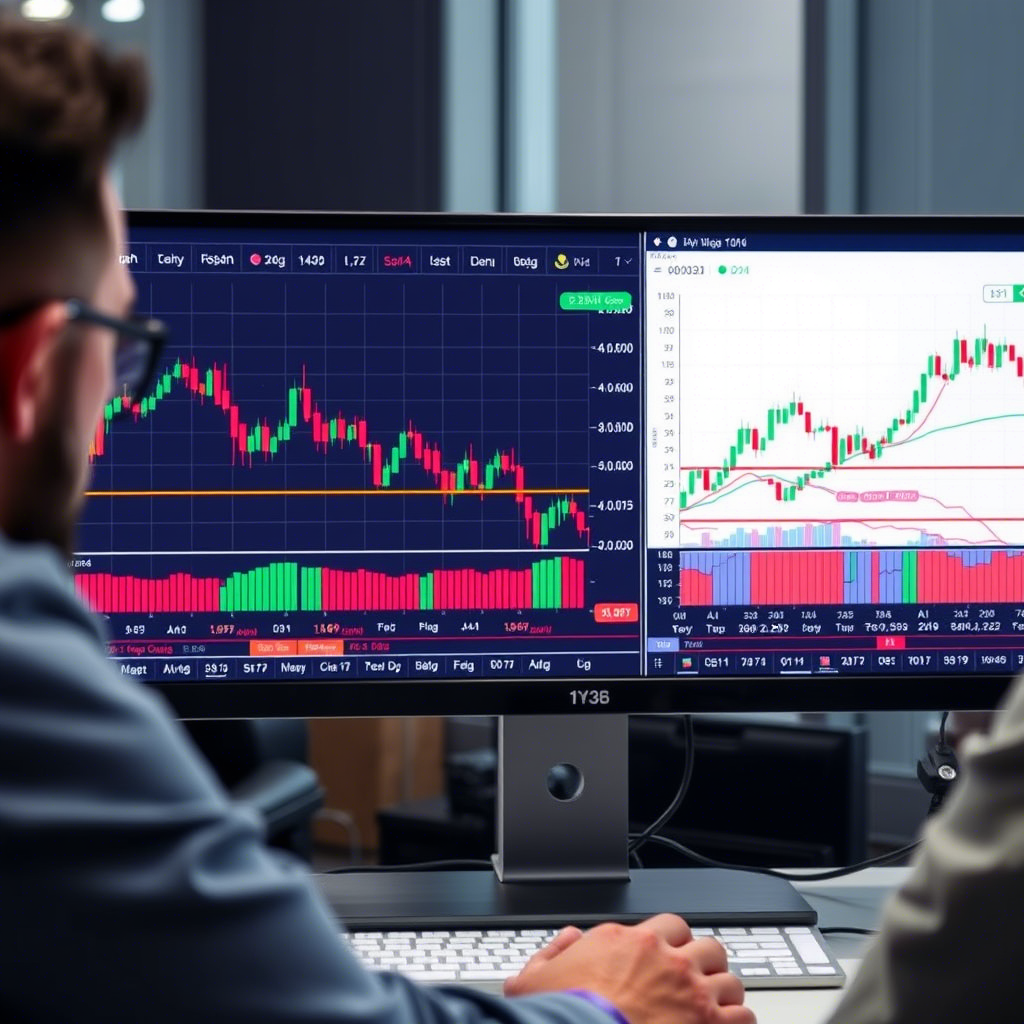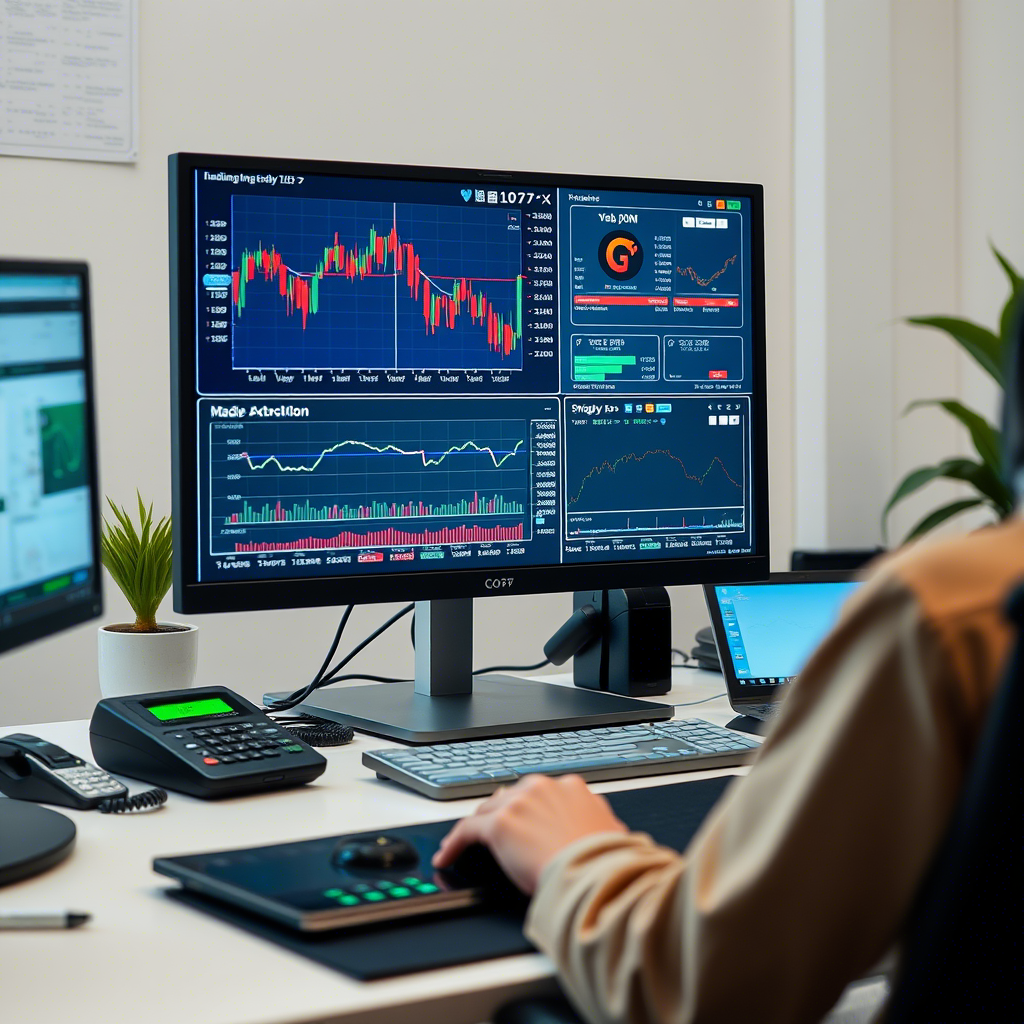The Ultimate Guide to Choosing the Best Forex Trading Platforms

What Is a Forex Trading Platform?
A forex trading platform is a software interface provided by brokers or third-party developers that allows traders to access the forex market. It serves as your gateway to placing buy and sell orders, analyzing market data, and tracking your trades. Platforms vary in features, usability, and complexity, catering to beginners, seasoned traders, and institutional investors alike.
The right platform can enhance your trading efficiency, while a poor choice can lead to frustration or missed opportunities. Whether you’re scalping for quick profits or holding long-term positions, your platform is your command center.
Why Choosing the Right Platform Matters
A trading platform is more than just a tool—it’s a critical factor in your trading success. Here’s why selecting the right one is essential:
-
Speed and Reliability: Fast execution and minimal downtime ensure you don’t miss critical trades.
-
Analytical Tools: Robust charting and indicators help you make informed decisions.
-
User Experience: An intuitive interface reduces the learning curve and boosts efficiency.
-
Cost Efficiency: Some platforms offer lower fees or tighter spreads, maximizing your profits.
-
Accessibility: Mobile and desktop compatibility lets you trade on the go.
With these benefits in mind, let’s dive into the key features to look for and explore popular platforms.
Key Features of a Great Forex Trading Platform
When evaluating trading platforms, focus on features that align with your trading style and goals. Here are the must-haves:
1. User-Friendly Interface
A clean, intuitive design is crucial, especially for beginners. The platform should make it easy to navigate charts, place trades, and manage your account without unnecessary complexity.
2. Advanced Charting and Tools
Robust technical analysis tools are essential for spotting trends and patterns. Look for:
-
Customizable Charts: Multiple timeframes and chart types (candlestick, line, etc.).
-
Technical Indicators: Moving averages, RSI, MACD, and Bollinger Bands.
-
Drawing Tools: Trendlines, Fibonacci retracements, and support/resistance levels.
3. Order Execution
Fast and reliable order execution is non-negotiable. Platforms should offer:
-
Market and Limit Orders: For instant or price-specific trades.
-
Stop-Loss and Take-Profit: To manage risk and lock in profits.
-
Low Slippage: Ensures trades execute at or near your desired price.
4. Mobile Accessibility
A mobile app allows you to monitor trades and react to market changes from anywhere. Ensure the app mirrors the desktop version’s functionality.
5. Security
Choose platforms with strong encryption and two-factor authentication (2FA) to protect your funds and data. Verify that the broker offering the platform is regulated by reputable authorities like the FCA, CFTC, or ASIC.
6. Cost Structure
Compare spreads, commissions, and overnight (swap) fees. Some platforms are free but tied to brokers with higher costs, while others charge for premium features.
Popular Forex Trading Platforms
Let’s explore some of the most widely used forex trading platforms, highlighting their strengths and ideal users.
1. MetaTrader 4 (MT4)
Overview: Launched in 2005, MT4 remains the gold standard for forex trading due to its versatility and widespread adoption.
Key Features:
-
Advanced charting with 30+ indicators and 9 timeframes.
-
Expert Advisors (EAs) for automated trading.
-
Customizable interface and one-click trading.
-
Available on desktop, web, and mobile.
Pros:
-
User-friendly for beginners yet powerful for pros.
-
Large community for support and custom tools.
-
Supported by most brokers.
Cons:
-
Outdated interface compared to newer platforms.
-
Limited to forex and CFDs.
Best For: Traders of all levels seeking a reliable, customizable platform.
2. MetaTrader 5 (MT5)
Overview: The successor to MT4, MT5 offers enhanced features for multi-asset trading, including forex, stocks, and commodities.
Key Features:
-
80+ indicators and 21 timeframes.
-
Built-in economic calendar and news feed.
-
Improved order execution and depth of market (DOM) tools.
-
Supports hedging and netting accounts.
Pros:
-
More advanced than MT4 with broader asset coverage.
-
Faster processing and modern interface.
-
Ideal for algorithmic traders.
Cons:
-
Less broker support than MT4.
-
Steeper learning curve for beginners.
Best For: Experienced traders diversifying beyond forex.
3. cTrader
Overview: cTrader is a sleek, modern platform known for its transparency and advanced features, favored by ECN brokers.
Key Features:
-
Level II pricing for market depth.
-
70+ indicators and detachable charts.
-
cAlgo for automated trading and custom indicators.
-
Cloud-based settings for seamless device switching.
Pros:
-
Intuitive design and fast execution.
-
Transparent pricing with tight spreads.
-
Strong focus on user experience.
Cons:
-
Limited broker availability.
-
Fewer third-party tools than MT4/MT5.
Best For: Day traders and scalpers prioritizing speed and transparency.
4. TradingView
Overview: Originally a charting platform, TradingView has evolved into a full-fledged trading solution with broker integrations.
Key Features:
-
Superior charting with 100+ indicators and social sharing.
-
Pine Script for custom indicators and strategies.
-
Browser-based with a vibrant community.
-
Mobile and desktop apps.
Pros:
-
Best-in-class charting and community-driven insights.
-
Easy to use for all skill levels.
-
Integrates with select brokers for trading.
Cons:
-
Limited direct trading functionality (depends on broker integration).
-
Premium features require a subscription.
Best For: Traders who prioritize charting and social collaboration.
5. NinjaTrader
Overview: NinjaTrader is a powerful platform for advanced traders, offering robust tools for forex and futures trading.
Key Features:
-
Advanced charting and 100+ technical indicators.
-
Customizable strategies with NinjaScript.
-
Market replay for backtesting.
-
Low-cost brokerage for active traders.
Pros:
-
Highly customizable for advanced users.
-
Strong backtesting and automation capabilities.
-
Competitive pricing.
Cons:
-
Complex for beginners.
-
Limited mobile functionality.
Best For: Professional traders focused on automation and analytics.
How to Choose the Right Platform
Selecting a platform depends on your trading style, experience, and goals. Consider these factors:
-
Trading Style: Scalpers need fast execution (cTrader), while long-term traders prioritize charting (TradingView).
-
Experience Level: Beginners benefit from MT4’s simplicity, while pros may prefer MT5 or NinjaTrader’s advanced tools.
-
Broker Compatibility: Ensure your broker supports your chosen platform or offers a proprietary alternative.
-
Budget: Compare platform costs, broker fees, and spreads to stay cost-efficient.
-
Trial Period: Test platforms via demo accounts to assess usability and performance.
Tips for Getting Started
Once you’ve chosen a platform, follow these steps to hit the ground running:
-
Practice with a Demo Account: Experiment risk-free to master the platform’s features.
-
Customize Your Workspace: Set up charts, indicators, and alerts to suit your strategy.
-
Stay Updated: Many platforms offer news feeds or calendars—use them to track market events.
-
Learn Continuously: Explore platform tutorials, webinars, or community forums to unlock advanced features.
-
Secure Your Account: Enable 2FA and use strong passwords to protect your funds.
Common Pitfalls to Avoid
Avoid these mistakes when selecting or using a trading platform:
-
Ignoring Broker Regulation: An unregulated broker can compromise even the best platform.
-
Overcomplicating Tools: Stick to a few key indicators to avoid analysis paralysis.
-
Neglecting Mobile Access: Ensure the platform’s mobile app meets your needs for trading on the go.
-
Skipping Updates: Keep your platform updated to avoid bugs or security risks.
Conclusion
Choosing the right forex trading platform is a pivotal step toward success in currency trading. Whether you opt for the industry-standard MetaTrader 4, the modern cTrader, or the charting powerhouse TradingView, your platform should align with your trading style, skill level, and goals. Prioritize usability, analytical tools, and broker compatibility, and always test a platform with a demo account before committing. With the right platform as your foundation, you’re well-equipped to navigate the forex market and seize profitable opportunities. Start exploring today and take your trading to the next level!




